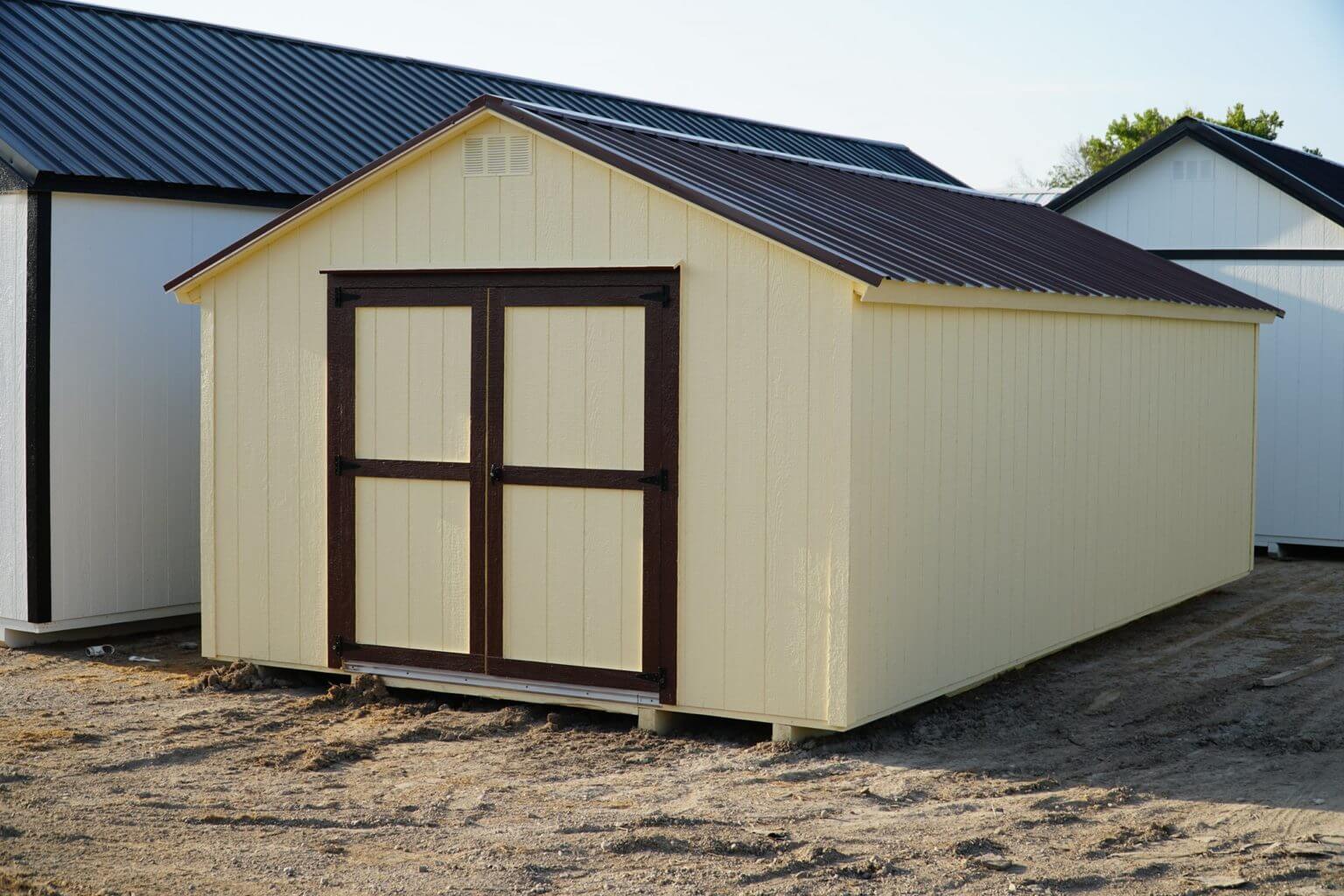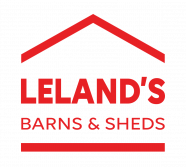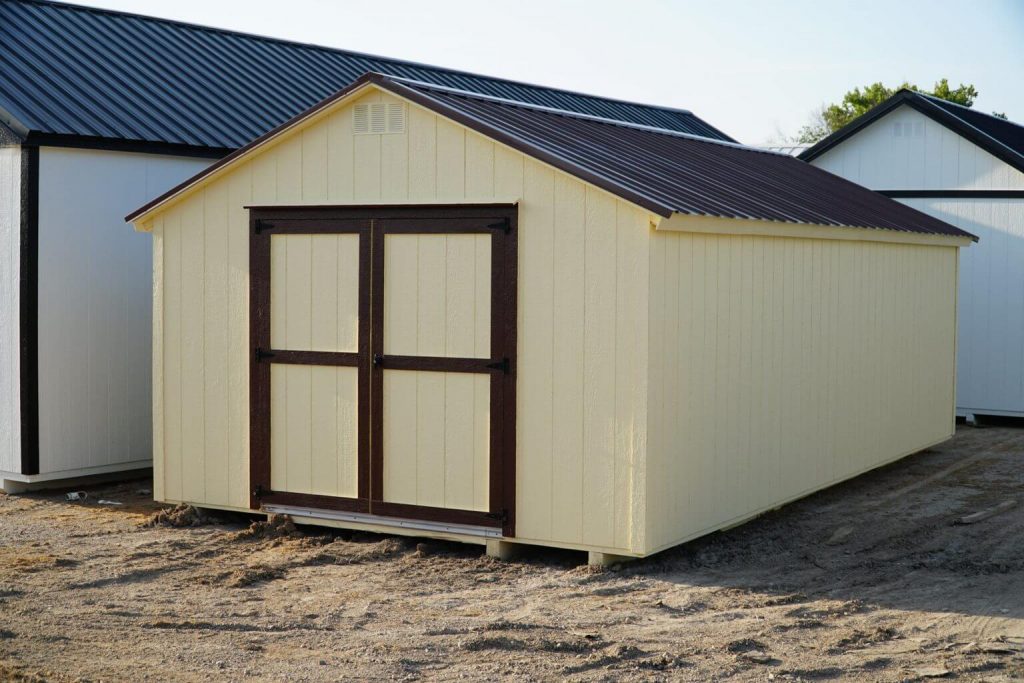
Most people know at least enough to avoid keeping tools out in the open. Besides any risk of theft, on some level, we know the elements can wreak expensive havoc.
What fewer people know is that a roof or cover alone isn’t enough if you want your tools to last. A quality storage shed, with four walls and a leak-resistant roof, is what’s needed to protect the various joints and sensitive parts of the common homeowner’s many tools. Otherwise, tools may start to rust or otherwise break, rendering the whole rest of the tool useless.
Fear Moisture
The core of tool storage tends to be avoiding water interacting with your tools whenever possible. The two most common materials tools, and about anything else we store, use for their critical parts are metal and wood.
Metal, namely iron, and steel, oxidizes when exposed to water. This begins the chemical reaction that causes rust.
While some measures are designed to avoid this, either through the use of a less common alloy or a special coating, such items are the exception to the rule. From a hammer to a saw to anything to do with electronics, you can usually assume at least some part of most tools is a rust risk. (Exactly how quickly rust will become an issue tends to depend on the complexity of the tool.)
Wood tends to handle water better than metal, especially if treated, but it can still wear out over time. Wood can warp and expand when exposed to moisture, sometimes making parts it connects with tighter or looser than usual. If wood holds a lot of moisture for too long, it can even rot, although we admit that tends to be rare if the wood is treated well.
Touching again on electronics, it’s not just rusting you have to fear with devices that use electricity. Almost anything with a circuit is at risk of frying if even a small amount of moisture gets into the wrong places. In some cases, this may even make the device unsafe to hold!
What a Storage Shed Can Do For You
With the above in mind, you might then ask what is the best solution to store tools and other items you can’t fit into your home.
First, let it be said that something like a simple four-pillared system holding up a small roof or even a plastic cover is better than nothing. These kinds of solutions can be good for temporary storage or when water damage isn’t a major concern.
For example, if you wish to store some chopped wood you intend to burn, you need it to be mostly dry. Throwing a tarp over your pile may do fine in that case.
However, you will want a storage shed if you want to protect what you’re storing. A shed, with four walls and a roof to keep the rain out, does more for guarding what you’re storing than most realize.
Rain: The Most Obvious (and Most Damaging) Water Risk
Of all the ways water can get places, we’d rather it not be, rain may be the most obvious.
Giving our readers the benefit of the doubt, we’ll assume that, whatever storage solution you utilize right now, you at least know to temporarily cover or store anything not highly water-resistant when it is raining.
A downpour can soak anything not protected, letting huge amounts of water seep all over. If the rain is acidic, the situation can be even worse.
Acid rain, a common issue in cities, can damage even materials we wouldn’t normally worry about, such as stone.
Snow: Not Just Wet but Heavy Too
If you live somewhere it snows, you best have a backyard storage solution that accounts for it. Storing yardwork items under a tarp won’t do much against what can be a huge amount of weight if there is heavy snowfall.
Snow can be nasty to the unprepared. As it accumulates, it puts more and more strain on the surfaces it collects on. This is a big reason roofs are angled; heavy snow better slides off, preventing too much weight from gathering.
A tarp will let snow gather and gather. This may crush whatever is underneath it if the snowfall is bad! And regardless, the snow will then melt, which is likely to seep under the tarp and may soak whatever is covered, at least around the edges.
Fog, Mist, & Morning Dew: Underestimated and Ever Present (For Most People Anyway)
With the exception of those living somewhere quite dry, most people have had days where it is obvious there is water in the air. You might notice the cool, wet feeling of a foggy day against your skin or see morning dew upon the grass despite it having not rained the previous day.
The truth is that water is everywhere; there are trace amounts in the air of all but the most inhospitably hot places around. If enough humidity gathers together, this water can condense on surfaces, getting them wet even if no rain occurs.
This is why a tarp isn’t a good solution for protecting anything important from water. It is better than nothing but this moisture can wrap around corners and other light barriers with relative ease.
Dirt, Dust, & Grime: Everyone’s Problem
While much of this article has focused on water, it isn’t the only thing that can hurt tools and other items you may want to store.
The air can carry water, but it can also carry other particulates, like dust and dirt. In fact, in very dry regions, this problem can be even worse. These particles can muck up moving parts, wear about anything down as the wind whips around, and cause all manner of issues.
As a general rule, these issues get worse the more powerful the wind is. Wind will pick up particles from the ground, carry them, and then toss them against any and all available surfaces.
Walls Come in Handy
How, then, does a storage shed help with these issues?
It’s a simple matter of design. Everything is designed with a purpose and a storage shed is designed to store, bearing the brunt of what nature offers and keeping what’s inside safe.
All it takes to protect your tools and the like from the worst of it is a well-designed roof, four walls, and a floor.
What should be noted is you don’t need Fort Knox to protect your tools. For example, a shed that isn’t air-tight will let some of the moisture in the air in. However, unless you’re storing delicate electronics, that’s fine; the worry is letting all the moisture the air has to offer in, which walls will more than protect against.
It’s a similar story with particulates. Of course, some dust still gets into a shed but without the wind gathering ever more and smashing all those particles against your stuff, it doesn’t matter.
What’s important is choosing a storage shed solution that you can trust to do its job. The solutions we offer are customizable, with a variety of aesthetic options you also can choose from to make sure you like the look too. We’re also more than willing to discuss specifics if you’re wondering what our sheds can do for you if you’re worried about a particular part of Mother Nature still doing some damage.
Whatever your storage solution, remember to do semi-frequent inspections for damage or other signs of wear. Even the best storage sheds may experience issues after some particularly nasty weather. (This, for the record, is why we also make sure to make service requests for our sheds an easy, pain-free process.)
Introducing Further Protections
A shed also allows you to take your storage game further. Now that you have a reliable way to keep the worst of the wind, particulates, and moisture off your tools, there are a few additional measures to improve things even more.
For example, you can further lower humidity in your space with commercial solutions, fans, or even placing kitty litter in key locations. Once you have a closed environment like a shed, it becomes much easier to monitor and control how much moisture affects what’s important to you.
These protections can be combined with placing your most sensitive tools and other items in plastic bins or bags. Close them up and almost nothing is going to be affecting them, especially if you’re also controlling humidity levels. As a matter of fact, it would not be surprising if tools protected in that way outlasted you (and probably any children you might have too).
Storage Sheds Protect Tools; It’s That Simple
At the end of the day, almost any expert will say there are two places you can safely store tools: your home or a well-made storage shed. Since many people don’t have the space in their house or want their yardwork tools available where they’re needed (in the yard), that means a shed will be most folks’ best bet.
If you’re interested in getting a shed yourself, contact us via this form! At Leland’s Barns & Sheds, we can help you not just get a storage shed, but a barn, cool hangout spot, nice workshop space, or just about any other enclosed space solution you might be looking for!
Whatever you’re looking for, talk to us about it. Chances are we can help you find an answer that’s affordable, quick, and something you’ll be happy with!

